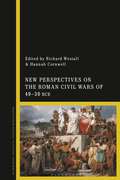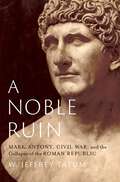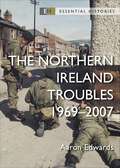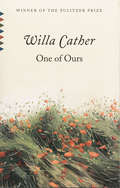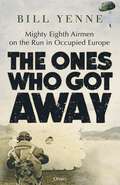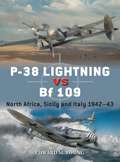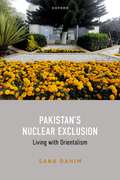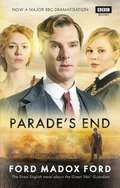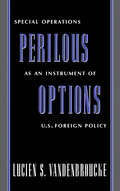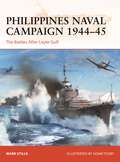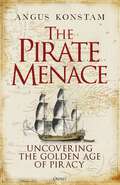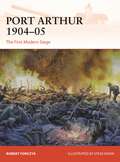- Table View
- List View
New Perspectives on the Roman Civil Wars of 49–30 BCE
Offering new and original approaches to the Roman civil wars of 49-30 BCE, the eleven papers presented here for the first time shed light on this crucial moment in the forging of Roman identity. They engage with a variety of problems and topics in political discourse (diplomacy, the concept of libertas, divine paternity); socio-economic structures (allied rulers, military officials, civil war finances, Agrippa's family); material culture (the coinage of Julius Caesar, the physical remains of Corfinium); and literary commemoration (Sallust on trauma, the lost Histories of Asinius Pollio). The case studies presented here contribute to our understanding of a period that is just as fundamental for our view of the Romans as it was to the Romans themselves. Arguing for the unity of the period in question, the volume deploys a multiplicity of methodologies to analyse how the trauma of armed conflict and the breakdown of accepted socio-cultural models not only mediated the contemporary experience of Roman civil war, but also left a lasting impression upon how Romans viewed the world. Incisive and critical, these contributions by a diverse team of international researchers, both emerging scholars and leaders in their fields, offer a new window into the world of the late Republic and early Principate.
A Noble Ruin: Mark Antony, Civil War, and the Collapse of the Roman Republic
by W. Jeffrey TatumA complex and captivating portrait of Mark Antony that offers a fresh perspective on the fall of the Roman Republic In his lifetime, Mark Antony was a famous man. Ally and avenger of Julius Caesar, rhetorical target of Cicero, lover of Cleopatra, and mortal enemy of Octavian (the future emperor Augustus), Antony played a leading role in the transformation of the Roman world. Ever since his and Cleopatra's demise at the hands of Octavian, he has remained famous, or infamous, a figure of recurring fascination. His life--variegated, passionate, sensual, bold, and tragic--inspires vigorous reactions. Nearly everyone has a view on Antony. For Cicero, he was a distasteful though talented man. Octavian fashioned him a dangerous failure, a Roman noble corrupted by his appetites and his lust for Cleopatra. Later historians adopted and adapted these themes, delivering their readers an Antony who was irresistibly depraved, startlingly brave, sometimes cunning, but almost always constitutionally incapable of choosing the right side of history. From these, especially Plutarch's compelling portrait, Shakespeare gave us the chivalrous and unstudied Antony of Antony and Cleopatra. A Noble Ruin, the fullest biography of Antony in English, assimilates the various, often competing, ancient sources to provide a strong and much-needed dose of realism to the caricature we have of this major historical figure. The book gives ample attention to the varied cultural circumstances in which Antony operated, including the social and moral expectations of his republican heritage, as well as the exceptional challenges posed by the convulsion of civil war. In furnishing a complex and captivating portrait of Anthony, A Noble Ruin allows readers to freshly assess his conduct, ambitions, and attainments, as well as the turbulent age in which he lived.
The Northern Ireland Troubles: 1969–2007 (Essential Histories)
by Aaron EdwardsIn this fully illustrated introduction, acclaimed historian Dr Aaron Edwards provides a concise overview of one of the most difficult and controversial actions in recent history. Spanning 38 years of the 'Troubles', the British Army's deployment in Northern Ireland (codenamed Operation Banner) was one of the most difficult and controversial in its recent history. Over 10,000 troops were on active service during much of the campaign, which saw armoured vehicles, helicopters and special forces deployed onto the streets of Ulster. In this book, Dr Aaron Edwards considers the strategic, operational and tactical aspects of Operation Banner, as the Army's military objectives morphed from high-profile peacekeeping into a covert war against the IRA. Using personal testimony from both sides of the sectarian divide, as well as insights from the soldiers themselves, he presents an authoritative introduction to the Army's role in the Troubles, providing expert analysis of Operation Banner's successes and failures. Updated and revised for the new edition, with full-colour maps and 50 new images, this is an accessible introduction to the complicated yet fascinating history of modern Britain's longest military campaign.
On The Trail of Grant and Lee
by Frederick Trevor HillAn examination of the lives of Ulysses S. Grant and Robert E. Lee
One of Ours
by Willa CatherThe son of a prosperous farmer, Claude Wheeler's future is laid out for him as clear and monotonous as the Nebraska sky--a few semesters at the local Christian college followed by marriage and a lifetime spent worrying about the price of wheat. Many young men would be happy to find themselves in Claude's shoes, but his focus is on the horizon, and on the nagging sense that out there, past the farthest reaches of the Great Plains and beyond the boundaries of convention, his true destiny awaits. When the United States finally enters the war raging in Europe, Claude makes the first, and greatest, decision of his life: He answers the call.<P><P> Pulitzer Prize Winner
The Ones Who Got Away: Mighty Eighth Airmen on the Run in Occupied Europe
by Bill YenneA remarkable collection of accounts of intrepid American aircrew shot down over enemy lines during World War II and how they got away. To be an airman in the Eighth Air Force flying over the war-torn skies of Europe required skill, tenacity, and luck. Those who were shot down and evaded capture needed all of that and more if they were to make it back to friendly lines. These are their stories. Each is compiled from the original intelligence debrief written by the pilots or aircrew themselves. Bill Yenne details how a spider web of escape routes sprang up, created by the local Résistance. Downed airmen were clothed, given false papers, and hidden so they could be smuggled back to England. These efforts were then supplemented by Allied intelligence agents. But the risks remained the same. Capture could mean death. Their accounts are sometimes funny, often heartbreaking. P-47 pilot Joel McPherson feigned appendicitis and was able to escape from the local German military hospital – after he had his appendix removed. He spent weeks operating as a getaway driver for a Maquis bank robber gang before making it into neutral Spain. Bomber crewmen Fred Hartung and Norman Therrien found refuge at a French château, but later nearly froze to death crossing the icy Pyrenees with the Gestapo on their trail. The accounts of these men and others from the Mighty Eighth make this a story of defiance, foolhardiness, and bravery against the odds.
Our War With Spain for Cuba's Freedom
by Trumbull White"A thrilling account of the land and naval operations of American soldiers and sailors in our war with Spain, and the heroic struggles of Cuban patriots against Spanish tyranny."
P-38 Lightning vs Bf 109: North Africa, Sicily and Italy 1942–43 (Duel #131)
by Edward M. YoungAn exciting account of the aerial battles fought by the USAAF's P38 Lightnings and the Jagdflieger's Bf 109Gs for dominance over North Africa and the Mediterranean.USAAF fighter pilots experienced a baptism of fire when flying the technically advanced but fragile P-38 Lightning over North Africa in the wake of 1942's Operation Torch. Their opponents were battle-hardened jagdflieger of the Jadgwaffe, flying the tried and tested Bf 109 in its very lastest Gustav iteration. Responsible primarily for escorting USAAF bombers attacking Afrika Korps installations in Tunisia, the P-38 units in North Africa had to develop effective tactics to defend the bombers against Luftwaffe fighter attacks. For several months the Lightning squadrons had to also cope with shortages of aircraft and spare parts, steady losses and a lack of replacement pilots. To survive, American aviators had to learn quickly. While it is difficult to definitively attribute victories in air combat, in the air battles over Tunisia and later over Sicily and Italy, the claims made by Lightning pilots were comparable to Luftwaffe claims for P-38s destroyed. Edward M. Young turns his attention to the bitterly fought air war in North Africa and the Mediterranean in 1942–43. Using original archival sources, official records and first-hand accounts from both USAAF and Luftwaffe veterans, as well as newly commissioned artwork and 50 carefully selected photographs from official and personal archives, this book sees two of the most iconic piston-engined fighters of their era pitted head-to-head for control of the skies in a key theatre of World War II.
Pakistan's Nuclear Exclusion: Living with Orientalism
by Dr Sana RahimDeveloped over six chapters, Pakistan’s Nuclear Exclusion provides an account of how orientalism is a lived experience of post-colonial racism, injustice, and inequality amongst members of the nuclear community in Pakistan. The account is produced through interviews with members of the community consisting of students, academics, and physicists in Pakistan. Rahim offers unique insights into how Pakistan’s nuclear community is not only perceived and represented but also how it seeks to operate in a wider nuclear community dominated by Western nuclear powers. The provision of such highly contextualised insights is enabled by the book setting out to both (a) provide analytical space for and (b) ‘give voice’ to how orientalism is experienced in the everyday of their lives. Consequently, the work provides (1) an analysis of how ‘dominant discourses’ of nuclear management and their ‘pictures of reason’ are exclusionary, (2) an analysis of the core features of orientalism as they pertain to Pakistan’s nuclear community; and (3) empirical findings which produce categories of the experience of orientalism into areas of the everyday – exclusion, making a career, Islamophobia, technology denial and self-reliance. Pakistan’s Nuclear Exclusion is enormously valuable to the research community as well as extremely well-conceived and researched. In addition, much of the methodology chapter offers a level of sophistication and self-reflection that translates well in the interview material and its subsequent analysis.
Palestine in the Second World War: Strategic Plans and Political Dilemmas -- The Emergence of a New Middle East
by Daphna SharfmanWhile the conflicts and national aspirations in British mandatory Palestine in particular and the Middle East in general were evident before the outbreak of the Second World War, the war itself accelerated and enhanced national expectations and presented continuing tactical and strategic dilemmas to British, Arab and Jewish leaders. British strategic policy during the war failed to provide answers to the political issues of the growing national demands in Palestine, and led to severe distrust of British policy among Arabs and Jews, as the two communities were framing mostly opposing reactions to wartime developments, and to conflicting expectations and policies towards post-war solutions for Palestine. The aim of this work is to analyse the continual development of strategic plans and political dilemmas that arose during the war period, which led to the subsequent post-war circumstance where American and Soviet involvement impacted on the strategic thinking of all involved parties, notwithstanding the British military victory. Analysis includes: the pre-war British strategic situation in Palestine, and the war events in Palestine and its Middle East neighbour countries (at the military-strategic level and the repercussions of the outcome of the war for the local Palestinian population). At the heart of the discussion lies British interests and policies framed towards Jews and Arabs; analysis of the two communities' conflicting interests and policies; and the resultant sea-change in the establishment of the Jewish state which brought in its wake the emergence of a New Middle East.
Parade's end
by Madox FordThis classic novel centres on Christopher Tietjens, an officer and gentleman. It follows him from the secure, orderly world of Edwardian England into the chaotic madness of the First World War. Against the backdrop of a world at war, the complex sexual warfare between Tietjens and his faithless wife Sylvia is played out. This is a story about love, betrayal and disillusionment in a time of horror and confusion.
Paris 1918: The War Diary of the British Ambassador, the 17th Earl of Derby (Liverpool Historical Studies #18)
by David DuttonThe diary of the 17th Earl of Derby, once thought to have been lost, provides a detailed and important account of the last months of the First World War as seen through the eyes of the British Ambassador in Paris. Derby was in many ways an unlikely choice as ambassador. He was not a diplomat and could not, on his arrival, speak French. His appointment owed much to Lloyd George’s determination to remove him from his previous post as Secretary of State for War. But, after a somewhat uncertain start, he proved to be a very successful ambassador upon whom successive Foreign Secretaries, Arthur Balfour and Lord Curzon, relied heavily for their appreciation of the situation on the other side of the Channel. Derby took up his appointment at a crucial period of the war when military victory still seemed some way off. He became an assiduous collector of information which he dictated into his diary on a daily basis. Derby’s embassy became renowned for its lavish hospitality. But this was far from being self-indulgence, for he firmly believed that entertaining was the best way to win the confidence of his French associates and therefore to obtain information that would be of use in London. Derby’s diary provides important insights into the state of the war, the often strained relationship between Britain and France and the intrigues of French domestic politics.
Perilous Options: Special Operations As An Instrument Of U. S. Foreign Policy
by Lucien S. VandenbrouckePhilippines Naval Campaign 1944–45: The Battles After Leyte Gulf (Campaign #399)
by Mark StilleThe forgotten story of the major naval operations conducted in the Philippines by the US and Japanese navies after Leyte Gulf up to the US invasion of Luzon in January 1945. The events that took place in the aftermath of the Battle of Leyte Gulf in October 1944 are often overlooked by military historians. An impressive array of naval operations continued in the Philippines up to January 1945, which included (on the Japanese side) the largest convoys to a contested island during the war, the first kamikaze campaign, and the second largest Imperial Japanese Navy surface operation during the last nine months of the conflict. On the American side, US forces were involved in efforts to cut off Leyte from enemy reinforcement, a massive amphibious invasion off Luzon, and large-scale operations by the Fast Carrier Task Force (TF 38).Expert naval historian Mark Stille throws new light on this often forgotten phase of the Pacific naval war. Among the actions covered are the battles for Ormoc Bay, the invasion of Mindoro, Japanese kamikaze attacks, and US Third Fleet's rampage through the South China Sea between January 10 and 20, 1945. Superb battlescene artworks bring the war at sea and in the air vividly to life, and maps and diagrams guide readers through a range of actions in clear, step-by-step detail.
The Pirate Menace: Uncovering the Golden Age of Piracy
by Angus KonstamThis new account explores the most notorious pirates in history and how their rise and fall can be traced back to a single pirate haven, Nassau. Angus Konstam, one of the world's leading pirate experts, has brought his 30 years of research to create the definitive book on the Golden Age of Piracy. Many of the privateers the British had used to prey on French and Spanish shipping during the War of the Spanish Succession turned to piracy. The pirates took over Nassau on the Bahamian island of New Providence and turned it into their own pirate haven, where shady merchants were happy to buy their plunder. It became the hub of a pirate network that included some of the most notorious pirates in history: Blackbeard, 'Calico Jack' Rackam, Charles Vane and Bartholomew Roberts. The growth of piracy led to a major surge in attacks in the Caribbean and along North America's Atlantic seaboard. With the fragile maritime economy of the Americas threatened with collapse, major ports were threatened and trade brought to a standstill, the British government finally declared war on the pirates. The Pirate Menace draws on extensive research, as well as a wide range of first-hand accounts, to produce a new history of the heyday of historical piracy.
Planning and Profits: British Naval Armaments Manufacture and the Military Industrial Complex, 1918-1941 (Research in Maritime History #53)
by Christopher MillerIn a time of great need for Britain, a small coterie of influential businessmen gained access to secret information on industrial mobilisation as advisers to the Principal Supply Officers Committee. They provided the state with priceless advice, but, as “insiders” utilised their access to information to build a business empire at a fraction of the normal costs. Outsiders, in contrast, lacked influence and were forced together into a defensive “ring” – or cartel – which effectively fixed prices for British warships. By the 1930s, the cartel grew into one of the most sophisticated profiteering groups of its day. This book examines the relationship between the private naval armaments industry, businessmen, and the British government defence planners between the wars. It reassesses the concept of the military-industrial complex through the impact of disarmament upon private industry, the role of leading industrialists in supply and procurement policy, and the successes and failings of government organisation. It blends together political, naval, and business history in new ways, and, by situating the business activities of industrialists alongside their work as government advisors, sheds new light on the operation of the British state. This is the story of how these men profited while effectively saving the National Government from itself.
The Political Legacy of King Hussein
by Alexander BlighThis book uncovers the true force behind most of the political processes in the Middle East over almost half a century. Through constant confrontations and negotiations with Israel and the Palestinians, under the watchful eye of the United States, the King managed to create a new Middle Eastern nation-state: the Jordanian country and its people. The focus of the book is Hussein's deep concern for the future of the last Hashemite monarchy, together with his own set of personal and ideological convictions, as they impacted on many of his strategic decisions and their contribution to the formation of present-day Jordan.
Port Arthur 1904–05: The First Modern Siege (Campaign #398)
by Robert ForczykA gripping, illustrated narrative of the longest and most brutal land battle of the 1904–05 Russo-Japanese War.Growing rivalry between Imperial Russia and Imperial Japan over territorial control in China and Korea led to the outbreak of war in February 1904. Japan struck the first blow with a surprise naval attack against the anchored Russian Pacific Fleet at its base in Port Arthur. Once the fleet had been neutralized, the Japanese landed their Second Army on the Liaotung Peninsula in May 1904, in order to besiege Port Arthur. The fighting that followed has become legend in military history. Respected military historian Robert Forczyk describes the Russian relief operation towards Port Arthur (the Battle of Telissu), and the lengthy siege of the Russian-held town and harbour. The initial Japanese attempts to capture the port by assault are documented in detail, together with the Japanese progress through the heavily fortified lines protecting Port Arthur. Specially commissioned artworks bring to life in vivid detail the Battle of Nanshan Hill, the Japanese assault on the Wantai Heights, and the bombardments of the Russian forts. Maps and diagrams explore the strategic situation and tactical progress of the fighting in step-by-step detail, and over 60 period photographs reveal the appearance and weaponry of the opposing forces and the terrain around Port Arthur.

